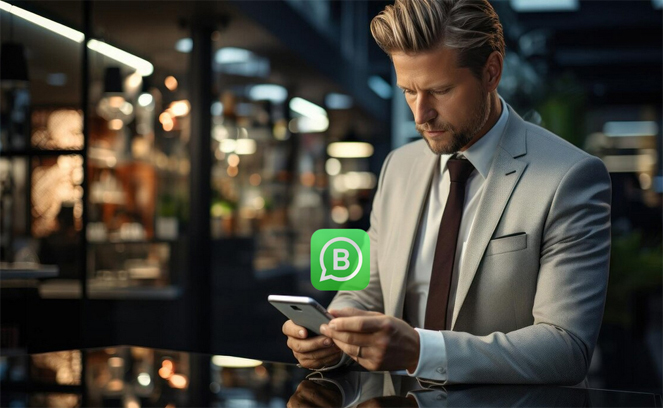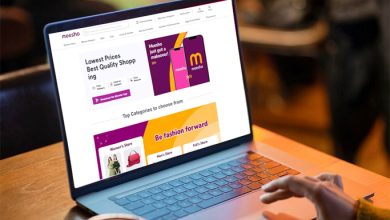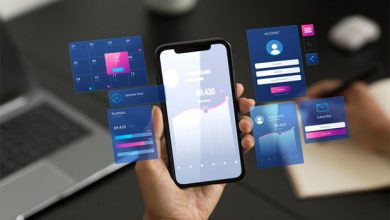
WhatsApp Business Customer Segmentation: Personalization is essential for successful marketing, and WhatsApp is a valuable tool for establishing a personal connection with your audience. However, what strategies can businesses use to maximize WhatsApp and ensure customer satisfaction? Segmentation is key. You can tailor your messages to meet specific customer needs and preferences by dividing your audience into smaller, targeted groups.
This guide delves into the concept of WhatsApp marketing segmentation, revealing strategies that can be used by both emerging and established eCommerce brands. If you want to improve your WhatsApp marketing, this guide provides valuable insights and practical steps to help you win back customers and increase engagement through personalized outreach.
What is Segmentation in WhatsApp Marketing?
Segmenting your audience on WhatsApp involves breaking them down into smaller groups based on common characteristics. These groups share common characteristics that are utilized to craft a message tailored to their specific segment or group.
WhatsApp marketing segmentation is unsuitable for brands with extensive lists or large marketing budgets. Suppose you have been gathering information about your customers, such as their activity on your site or personal details like age, city, and preferences. In that case, you can easily create segments and send customized messages.
Discover the ins and outs of segmentation and the practical strategies to boost ROI for any e-commerce brand.
Why is Segmentation Required?
Understanding the importance of segmentation is crucial when it comes to implementing this effective strategy. There’s more to it than just sending messages to customers. It’s all about ensuring your messages reach the intended recipients at the perfect moment. Here are a few key reasons to consider customer segmentation for your WhatsApp marketing:
Better targeting of customers who would convert again
Having loyal, repeat customers is crucial for the success of any business. Here’s a simple guide to help you grow your business by giving them your full attention:
Save money on advertising: Getting repeat sales is more cost-effective than acquiring new customers. Reward your loyal customers with targeted offers.
Build loyalty: Happy customers who keep coming back will become strong supporters of your brand. They rely on recommendations from satisfied customers to fuel their natural expansion.
Personalize your messaging: Use customer purchase history data for effective customer segmentation. Create tailored messages that resonate with their specific interests.
Offer incentives: Special offers and promotional codes encourage customers to make repeat purchases. Appreciate and acknowledge the loyalty of your valued customers.
Suggest complementary products: Suggest products based on previous purchases. These factors contribute to higher-order values and a more enjoyable shopping experience.
Segmentation helps foster connections with your most valuable customers. It turns casual purchasers into dedicated supporters of the brand. This dedicated community enhances sales, lowers expenses, and drives long-term expansion.
Win back likely-to-lose customers
Trying to regain every lost customer can be a drain on resources. By segmenting customers based on their previous purchases, information, and activity (or lack thereof), you can identify those more likely to return. Consider looking into your data to determine customer segments interested in returning to your business.
1. Customers who were referred to us
2. Customers who have referred you to others
3. Customers who have added items to their cart after making an initial purchase but have not made another purchase yet
Targeting customers with a positive opinion of your brand can be a more efficient way to allocate your time and marketing resources. It’s essential to focus on reaching out to those most likely to give you another opportunity.
Better ROI and lower cost of conversion by personalizing the outreach
Each person on your contact list may be at a different sales cycle stage. Some customers are loyal and may not require repeated information about your product. Individuals who haven’t become customers yet might require incentives such as free shipping or discounts to make their initial purchases.
By segmenting your audience, you can customize your messages to better suit their needs rather than sending out the same generic content to everyone. If you’re still sending out mass messages, it’s time to reconsider why.
Additionally, it boosts engagement, generates more revenue, and enhances your return on investment. Breaking down your contacts allows you to communicate with individuals based on their unique connection to your business. This outreach strategy is highly effective and cost-efficient.
Reduced unsubscription and improved engagement
Picture yourself as a non-customer receiving a message from a brand asking you to refer them to your loved ones. It might seem strange, and if you continue receiving these irrelevant messages, you may eventually choose to unsubscribe.
If you fail to send only the most important messages to your audience, the same thing will happen to your brand. Continuously sending out email blasts can lead to audience fatigue, decreasing engagement and reducing campaign impact. Segmentation ensures that your brand messages remain engaging and relevant to your audience, preventing them from becoming overwhelming.
Better insights to identify valuable customer segments
After sending out an email blast, it’s satisfying to see a boost in revenue shortly after. It indicates that some individuals on your email list eagerly anticipated the offer, sought social proof, or needed a gentle reminder to purchase.
If you’re looking for additional insights, like understanding which individuals from your list connect most with your message and which messaging strategies are most effective with them, segmentation is the way to go. By segmenting your list and sending targeted messages, you can gain valuable insights into which group resonates the most and identify common behaviors among the contacts in that group.
Additionally, consider how you can encourage individuals outside the target group to exhibit similar behavior to achieve the desired outcome, such as purchasing, leaving a review, or renewing their subscription.
Previous actions often serve as reliable predictors of future actions. It can assist you in making informed assumptions about the factors you should focus on to achieve the desired outcome.
Strategies for Effective Use of Segmentation
Understanding the importance of segmentation is one thing, but knowing how to use it effectively is another. There are multiple approaches to this strategy, such as segmenting based on products purchased and understanding the value of the customer. Let’s delve into a few highly efficient techniques and comprehend their significance for your business.
1. Products purchased
This group consists of individuals who have previously purchased one or more items from your company. Your brand and what to expect are already well-known to them. Attracting pre-launch sales, securing early adopters for a new product, and implementing cross-selling strategies would be a breeze for this segment.
For instance, if you sell stationery and customers purchased planners from you last year, they will probably repurchase them this year. Consider sending them coupons to encourage them to repurchase the planner for the upcoming year and remind them to keep up with their planning routine.
Using insights from the ‘products purchased’ segment can help you effectively target customers who have yet to make those purchases.
Imagine you own a clothing store. By identifying a group of customers who purchase your hoodies, you may find that they are also interested in buying caps and vice versa. Targeting customers who have purchased hoodies and suggesting caps to them can increase the likelihood of generating sales.
Why this segment
If you’re looking to gather feedback for your store, this is the perfect segment to reach out to to receive some glowing 5-star reviews. Doing so will enhance your social proof and ultimately drive up your sales.
If you plan to relaunch an improved version of your product, consider reaching out to your previous customers and offering them a special discount on the upgrade. Even the largest company in the world follows this practice (it’s easy to guess which one!). As an existing customer, they would be the top candidates to purchase and support your pre-launch or initial sales.
2. Subscription potential
This group of individuals is highly inclined to purchase your products frequently. The success of this segment depends on the product and your target audience.
Come across items like coffee, socks, or grooming products that require regular restocking. Introducing a subscription service and targeting customers likely to make recurring purchases can be quite profitable.
Customers who have purchased coffee from your store with a gap of 2-3 months should receive a subscription offer. Customers who have made a single purchase should be notified about the subscription option, which offers a discount.
In this section, you can categorize based on how often purchases are made (frequent, moderate, or infrequent).
Why this segment
With this solution, you can expect a consistent stream of monthly customers and revenue, providing stability for your business. You can easily forecast your minimum revenue and determine the necessary inventory levels. Reducing uncertainty allows you to concentrate on making informed decisions and developing a strategic plan for the future.
Your customers who subscribe to your products/services have the potential to become enthusiastic fans, which will help boost your word-of-mouth marketing.
3. Value of the customer
Segmenting customers into three tiers based on their spending and order history allows you to filter them easily. The tiers are high-value (customers who have spent the most), medium-value, and low-value (customers who have paid the least).
Why this segment
It’s essential to focus on guiding customers towards higher-value purchases or encouraging them to make repeated purchases, which will increase their lifetime value. It’s more effective to target the low-value tier with more assertive promotional campaigns compared to the high-value tier. To maintain the loyalty of your high-value customers, consider implementing ‘fall-back’ campaigns that encourage them to return to your store on a regular basis.
One practical approach is to provide a variety of products at different price points. Take a look at how Apple guides a customer through their value ladder:
4. Location Segment
You can categorize individuals according to their shipping and billing addresses.
Why this segment
Suppose you notice that customers in a specific city or pin code tend to have a higher order value than customers in other cities. This valuable information can help you strategically decide where to place your products in physical stores. By analyzing segments like ‘products purchased’ and ‘pin code,’ you can gain valuable insights into which products will likely sell well in specific areas when placed in physical stores.
Utilize the location segment to deliver tailored messages to individuals in specific regions. A message about the launch of store-wide sales in London would be more applicable to individuals in that region than those in New York.
5. Based on Tags
With WhatsApp marketing segmentation, you can categorize customers according to their actions. Tags are labels attached to a customer to identify a specific characteristic. For instance, you can label a customer as ‘dissatisfied’ if they have given a low rating to your products, or you can tag a customer as ‘event-attended’ if they have attended any of your store events.
Segments can be created using either a single tag or a combination of tags. A segment with customers labeled as ‘discount-seeker’ and ‘medium-value’ is suitable for conducting clearance sales.
Organizing your content using tags can improve your outcomes while minimizing your workload. Customers are more likely to make a purchase when they receive messages that are clear and meaningful.
Create Guardrails For Your Business With Segmentation
Guardrails are commonly installed on cliffs or roadsides to ensure vehicles stay on course and avoid accidents. Using a similar analogy, what factors can encourage customers to remain loyal to your business?
Choose a segmentation strategy based on the specific guardrail you want to address.
Help your customers progress on the value ladder, particularly in subscription and product-purchased segments. It was discussed in detail in the section on the value of customers.
Keep your current customers from leaving: Churn occurs when customers discontinue their purchases from your brand.
You can create segments by considering the customer tier and churn probability. It allows you to send targeted messages to each segment. Calculating churn probability is possible by considering the number of days since the last purchase.
It would be logical to send product recommendations for discounted and low-value items to customers in the ‘low value AND high-risk’ category. Consider sending discounts, free samples, or VIP event invites to customers in the ‘high-value, high-risk’ category.
Should You Use WhatsApp Business For Ecommerce Marketing?
WhatsApp has become a powerful SaaS tool for eCommerce businesses looking to connect with customers worldwide. With a massive user base of over 2.5 billion people worldwide, WhatsApp’s Business suite is a powerful tool that links brands and buyers through impactful conversational commerce. Customers have the convenience of shopping interactively, receiving purchasing advice, post-purchase support, and more, all within the chat interface. These are a few essential ways that WhatsApp is used in the ecommerce industry:
1. Send alerts and notifications
With WhatsApp, businesses can easily send customized alerts and notifications to customers. It involves order confirmations, shipping updates, and back in stock notifications. Customers will be kept updated on the status of their purchases. Appointment reminders can also be sent for service businesses such as salons or medical clinics.
2. Product discovery
WhatsApp allows for easy product discovery through catalog sharing and virtual shopping assistants, making it perfect for conversational commerce. Customers have the convenience of browsing products, asking questions, and receiving recommendations directly in the chat interface.
3. Chatbots
Chatbots in the app offer fast solutions to any questions or concerns. This enhances a user-friendly shopping experience. WhatsApp provides a range of multimedia features, allowing users to easily share product videos, GIFs, PDF catalogs, and more. Companies can also use augmented reality to permit customers to see products in their own environment.
4. Polls and quizzes
Adding polls and quizzes can make shopping more enjoyable by incorporating an interactive element. Using multimedia enhances the visual presentation of products. Customized campaigns and sponsored messages assist businesses in reaching out to their target audience.
5. Customize your campaigns
Customize your campaigns with broadcast messages, special offers, QR codes, and sticker packs. Targeting increases the reach and conversion rates. WhatsApp offers live order tracking on a map, allowing customers to easily follow drivers to their doorstep.
6. Secure in-app payments
WhatsApp also allows for secure in-app payments to make checkout a breeze. Chatbots have the ability to qualify leads, creating the buying journey smoother by offering instant callbacks and easy meeting scheduling. The in-app payment and lead generation features are designed to boost sales.
Whether you’re a small shop or a global enterprise, the WhatsApp marketing suite allows you to quickly expand your eCommerce reach and enhance customer experience.
Final Words
WhatsApp marketing involves promoting a brand through WhatsApp, a popular messaging platform. This channel is perfect for brands looking to reach a broad audience, establish strong customer relationships, and boost sales. WhatsApp is widely used by people all over the world for messaging. By 2020, the monthly active users had reached a staggering 2 billion. This marketing channel is essential for businesses reaching audiences in developing countries. For example, India has a whopping 340 million monthly WhatsApp users, while Brazil boasts nearly 100 million. Additionally, WhatsApp is a popular option for reaching the US market, with 68 million Americans accessing the platform monthly.
Using WhatsApp marketing enables you to maintain constant communication with your customers. A significant number of WhatsApp users access the app daily. Even better, rest assured that your offers will be received, as text messages have an impressive 98% open rate. Another important aspect is that your customers highly appreciate this communication channel. Most people, 53%, are more inclined to purchase from companies that offer chat apps for communication. There are other compelling reasons to incorporate WhatsApp into your marketing strategy.




